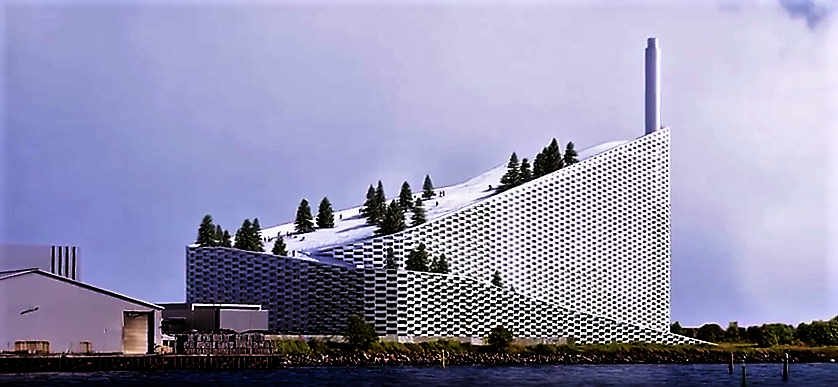
CopenHill, a new artificial ski slope built on the roof of a huge waste incinerator in Copenhagen, Denmark finally opened to the public on Friday.
While the public shred down the 1,500-feet ski slope, up to 450,000 tonnes of waste will continue to be converted annually into heat and electricity in the Amager Bakke Incinerator Plant underneath skiing guests’ feet.
“The ski slope idea came from realizing that Copenhagen has a cold climate with several months of snow, but absolutely no mountains,” said architect Bjarke Ingels.
The Amager Bakke power plant in Copenhagen is a key component to the City’s plans to become the world’s first zero-carbon city by 2025. In order to achieve full utilization of the power plant, it must be located in town. Yet, this proximity to a population center would easily be controversial. To prevent any ruffled feathers it was determined that Amager Bakke would need to fulfill another function for the people of Copenhagen. The solution was recreation in the form of an artificial ski slope, CopenHill.
The slopes of CopenHill includes green, blue, red, and black pitches. In Europe, a red slope is an advanced intermediate run between a blue and a black run. In North America, the most similar example would be the blue-black slopes at Winter Park, Colorado. Three magic carpets and a T-bar provide access to the top of the hill. The slopes themselves are covered in synthetic bristles that allow skiing year-round. So-called dry ski slopes have been around for decades, and have been made from a variety of synthetic bristly materials. Dry ski slopes have been popular in parts of Europe with little to no snowfall. CopenHill will offer a vertical drop of some 75 meters (246 feet), giving CopenHill the distinction of having the highest vertical drop of any ski hill in Denmark. And if skiing just isn’t your thing, the exterior of Amager Bakker will also feature a climbing wall that will be some 85 meters (279 feet) tall.
Amager Bakke is a waste-to-energy power plant. Waste-to-energy (WTE) power plants have been popular in Europe for a long time. Large populations in geographically constrained areas often lack for space with which to landfill their waste. WTE provides a source of energy while also largely eliminating the need to landfill waste. Yet, waste-to-energy has been controversial. The first generation of plants built had poor emission control for nitrogen oxides (NOx) and sulfur dioxide (SO2), key components to the creation of acid rain. Additionally, combustion did not occur at high enough temperatures to prevent the formation of dioxins, some of the most toxic substances known to man. Emission control technologies have improved significantly since the first generation plants, and new furnaces operate at really high temperatures (over 1000 degrees Celsius, 1832 degrees Fahrenheit) preventing the formation of dioxins. But, old fears die hard as evidenced by the cancelation of a proposed WTE plant in Australia over concerns about emissions.